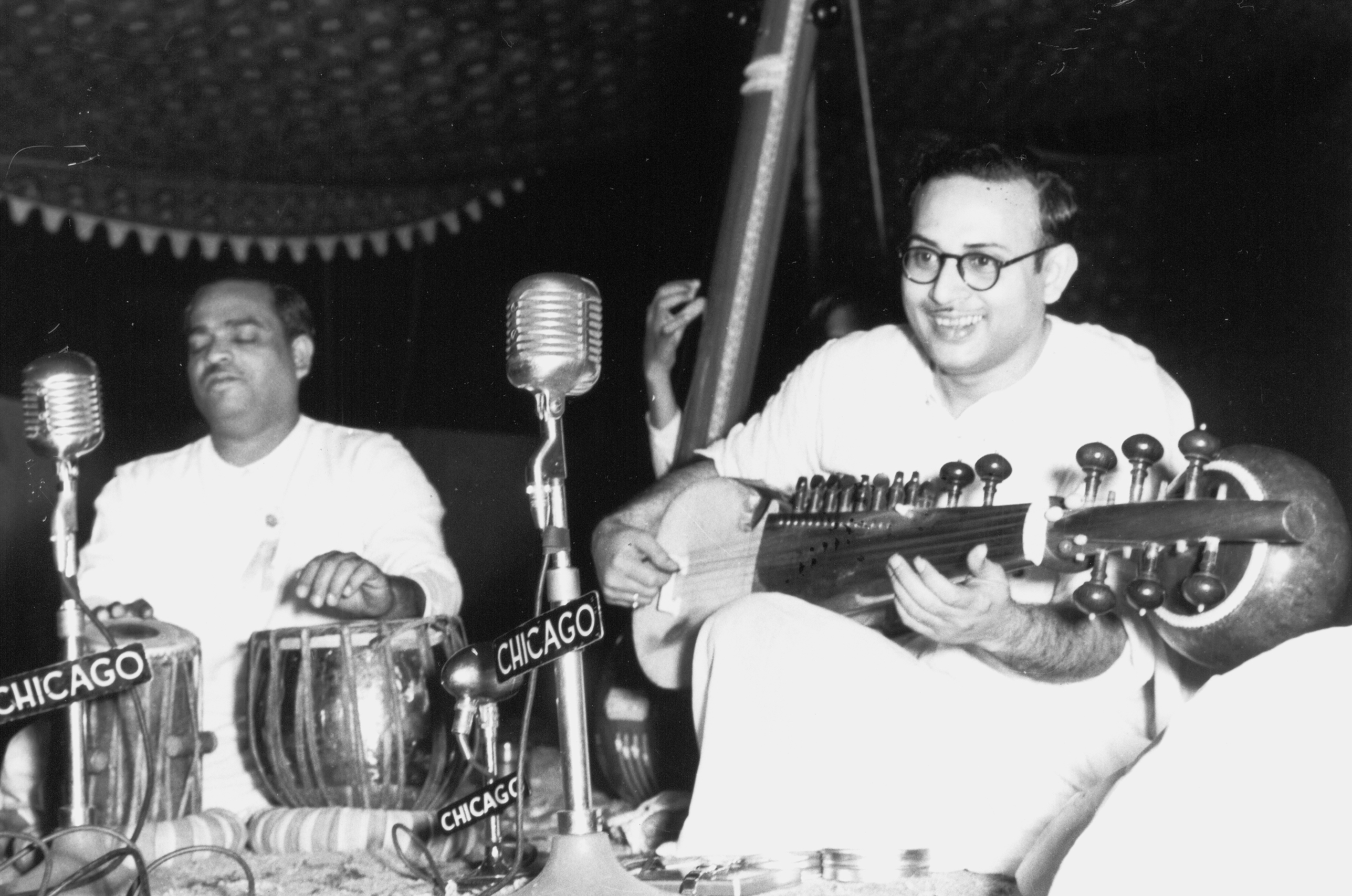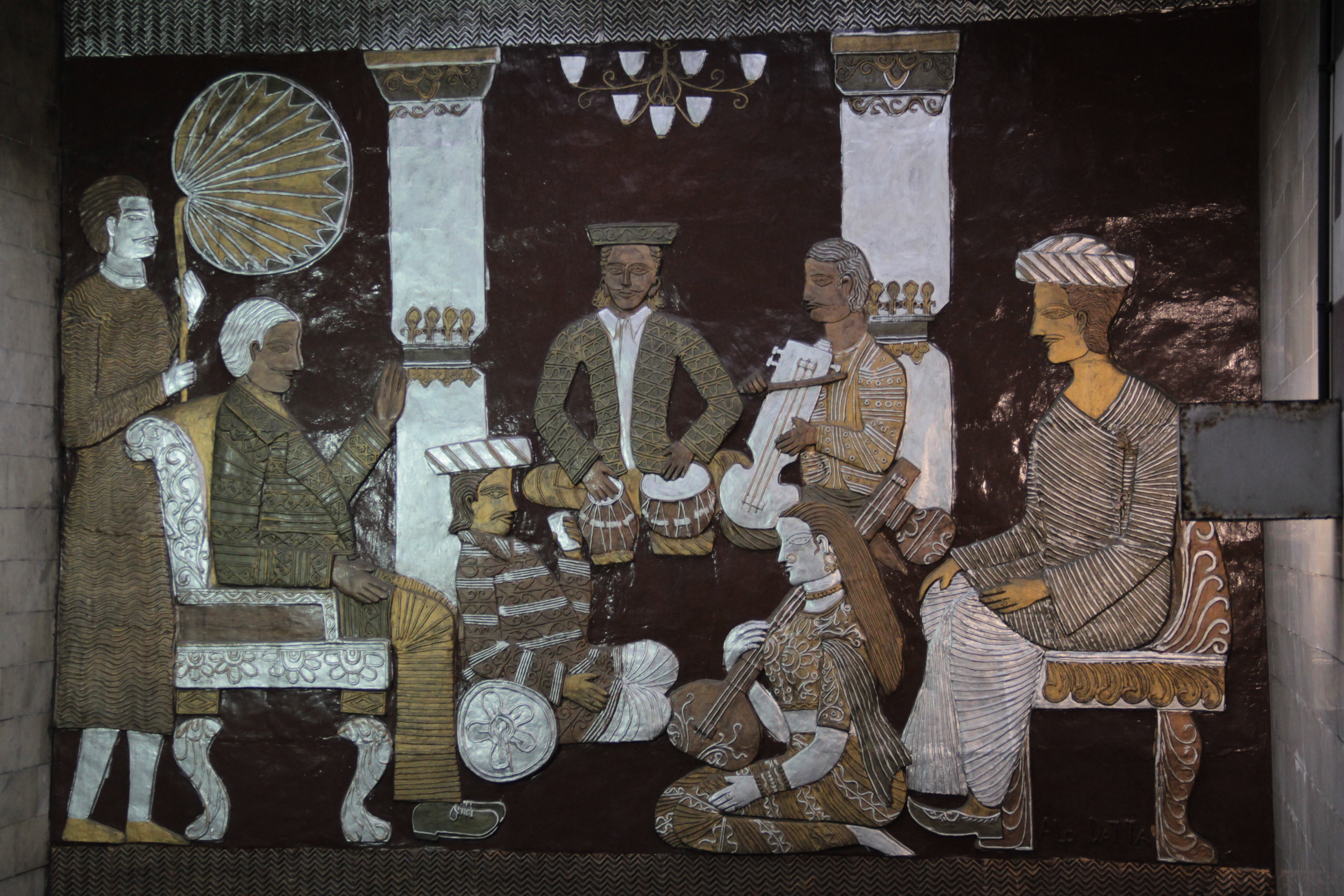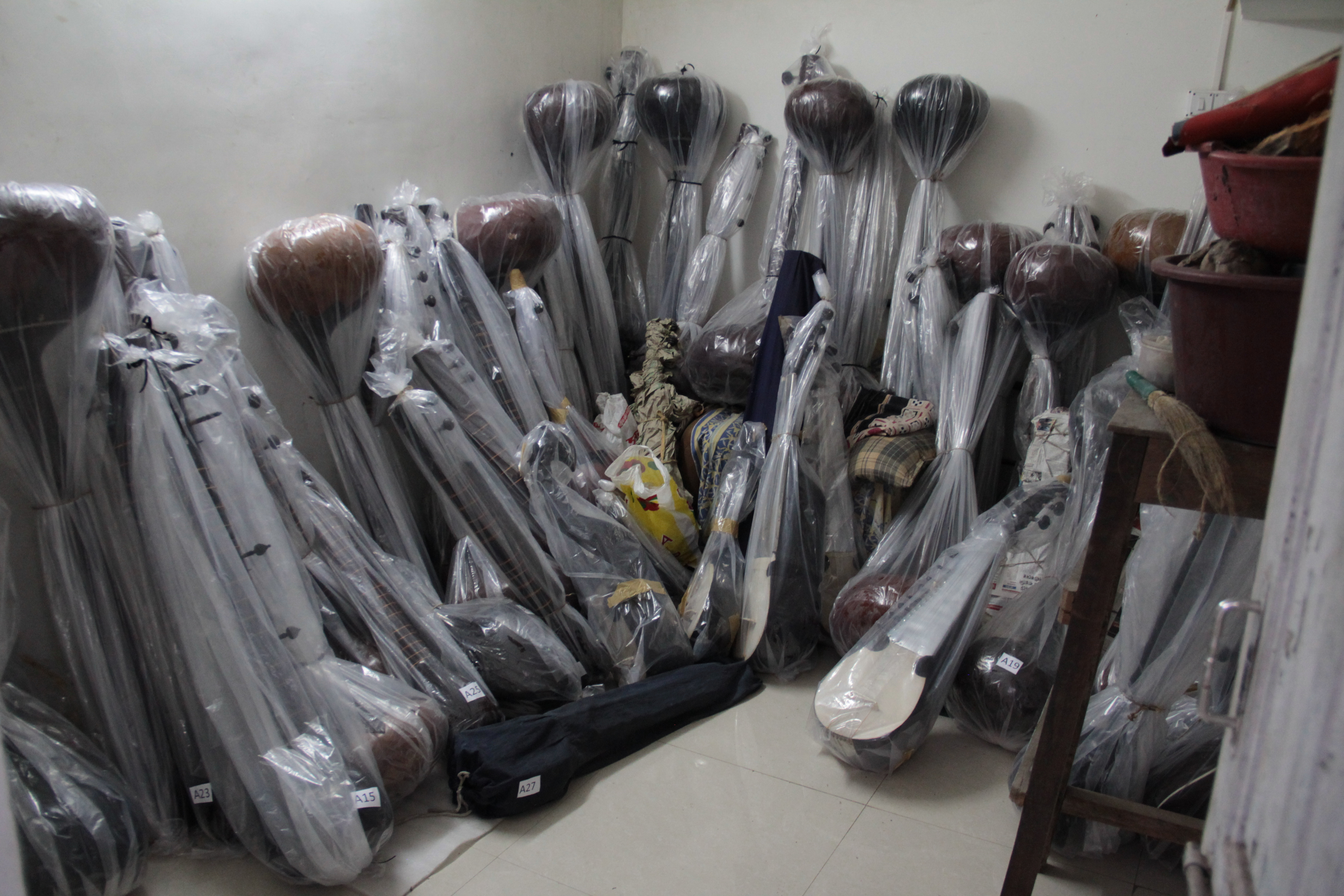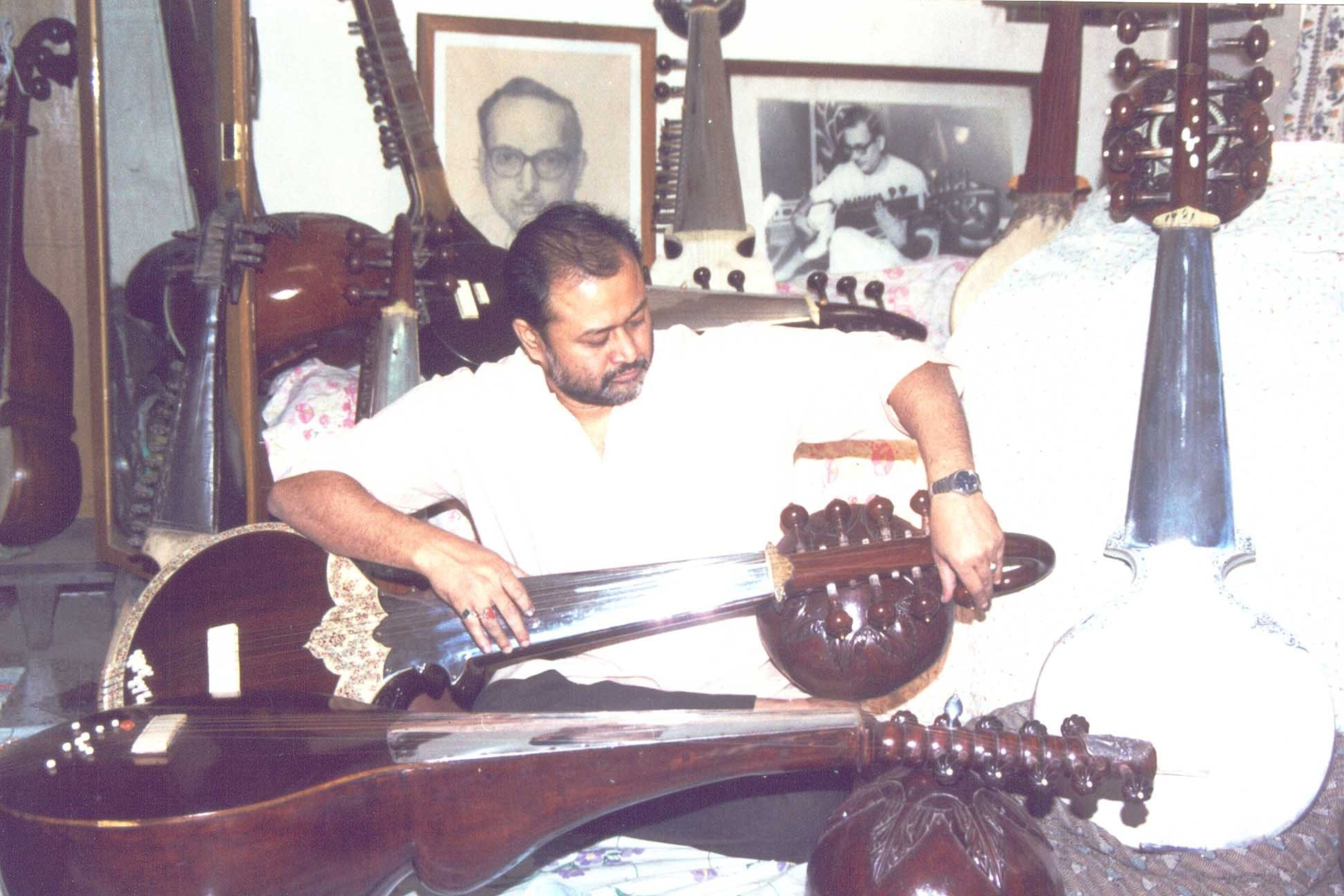|
‘Once there was only Music’ –
The Oral History of a grand Indian Musical Instrument Collection
“We should not only preserve these instruments, but preserve the inspiration of the man behind these inventions.”
Rantideb Maitra, in the oral history interview referring to the legendary musician and composer Radhika Mohan Maitra, his inventions of instruments and musical thoughts.
From a busy street one turns into an small alleyway; passing the tiny mosque; street sellers offer paan (filled betel leaves) and newspapers, and of course, Bengali chai, milky tea served in tiny clay cups. Then a right turn, in another even smaller alleyway, this time a cul-de-sac. And eventually to the left is the house of Irfan Muhammad Khan. He is one of the last guru (teacher) and versatile musician belonging to the ancient Lucknow-Shahjahanpur gharana (one important school of North Indian Art Music).
Somjit DasGupta (b. 1960), the youngest student of the Radhika Mohan Maitra and Rolf Killius have the privilege of meeting this knowledgeable, friendly and softspoken man in his house in an old part of Kolkata. In his music room he talks for hours about his old sitar and sarod lineage and their origin in the villages in Shahjahanpur and the former royal court in Lucknow, both areas in the present North Indian state of Uttar Pradesh.
Oral history and how a musical instrument collection can be an intangible resource?
Similar to the interview with Irfan Muhammad Khan Somjit Dasgupta and Rolf Killius have conducted and recorded around forty hours of Oral Histories. The main topics were this large musical instrument collection, the people behind it, and its relationship to the rich, complicated and controversial history of Hindustani Music. Hindustani Art Music had been developed in North and East India and is today mainly practiced in India, Pakistan and Bangladesh.
This collection of nearly 300 musical instruments reaching back to nearly 400 years is most probably the largest and most comprehensive private collection of instruments in India. The instruments tell the history of Hindustani Art Music and its musicians and musical dynasties of the regions of Greater Bengal (An area which today comprises of Bangladesh and the whole or parts of the Indian states of West Bengal, Assam, Bihar and Odisha.) region and North India.
As a result of this oral history research Somjit Dasgupta and Rolf Killius intend to release a comprehensive publication based on these interviews and knowledge of the instruments in this collection. The aim is that this publication should add substantial information to be considered for scholars of further research.
Raga Chayanat by Somjit DasGupta |







